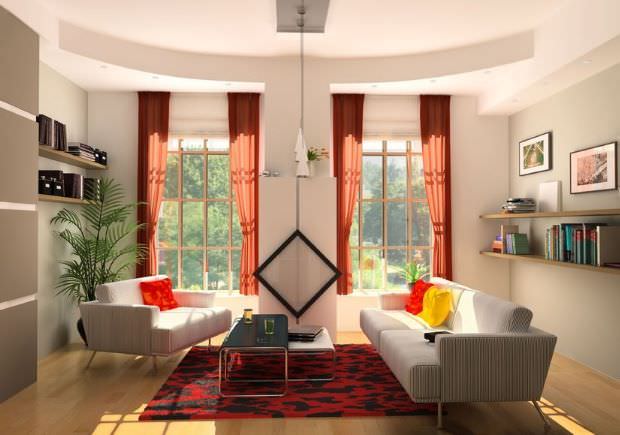 Interior photography might not be the most spectacular, but it can bring a pretty penny and it is also one of the most shared genres on Facebook. People love a good looking interior. They link their dreams and wishes to it. As a photographer, you want to transmit that beauty from the location to the viewer in the most professional way. Here are a few important things to keep in mind about interior photography.
Interior photography might not be the most spectacular, but it can bring a pretty penny and it is also one of the most shared genres on Facebook. People love a good looking interior. They link their dreams and wishes to it. As a photographer, you want to transmit that beauty from the location to the viewer in the most professional way. Here are a few important things to keep in mind about interior photography.
Height
The height you’re shooting from is very important. A lower angle can work great for some interiors because it foreshortens, but you don’t want to be too low either. You have to be high enough to keep the balance in the composition. Generally, the height of the camera is influenced by the foreground. If you are too high, the foreground will be distorted and that looks very bad with some furniture. Try to keep the balance by having as less distortion as possible, both in the foreground and the background.
Who are you shooting for?
It’s important to understand where the demands are coming from. Are they coming from an architect, a construction engineer or an interior designer? Each one may have different expectations from you. Architects generally like a dramatic view and don’t have anything against wide angles and tilt- shift lenses. Interior designers will focus on the furniture and decorations, while the engineer might want the position of the columns to be very visible. Understanding what your client wants from your photos is kind of a big deal for your career.
Light
There are two key things to remember about light in interior photography. Number one is that it separates real photographers from Sunday shooters. Number two is that a good photograph will always look better than reality. With that said, the general trend is to use ambient light. I guess it’s a normal thing, considering the capabilities of the cameras we have today. But I think that sticking to ambient light alone means limiting yourself. You can do wonders if you learn to create your own light. I prefer finding a balance between artificial and ambient light and I also recommend continuous lighting. If you know what you’re doing, any light source will do, but the point is to make that interior as attractive as possible.
The view
The view or the angle in photographic terms is how you approach the scene. The head-on view is symmetrical and gives a sense of strength. There are some rules that are shared with landscape photography. Do no split the scene in half. Focus on 2/3 of the composition. Always remember to include the details and bring out details and texture. Take your time when framing and use a tripod even if you don’t need it for exposure. It’s better to spend time getting that one good frame than to waste time taking a lot of useless shots.
Also Read: 41 REASONS WHY YOU SHOULDN’T DATE A PHOTOGRAPHER
Recommended Reading:
- 2013 Photographer's Market: The Most Trusted Guide to Selling Your Photography
- How to Create Stunning D igital Photography
- Best Business Practices for Photographers
- The Fast Track Photographer Business Plan: Build a Successful Photography Venture from the Ground Up
- Group Portrait Photography Handbook
- 500 Poses for Photographing Women
- The Best of Family Portrait Photography: Professional Techniques and Images
- 500 Poses for Photographing Group Portraits
- Selling Your Photography: Ho w to Make Money in New and Traditional Markets
- Starting Your Career as a Freelance Photograp her
- Photographer's Survival Manual: A Legal Guide for Artists in the Digital Age
- Legal Handbook for Photographers: The Rights and Liab ilities of Making Images
- Taking Stock: Make money in microstock creating photos that sell
- Going Pro: How to Make the Leap from Aspiring to Professional Photographer
